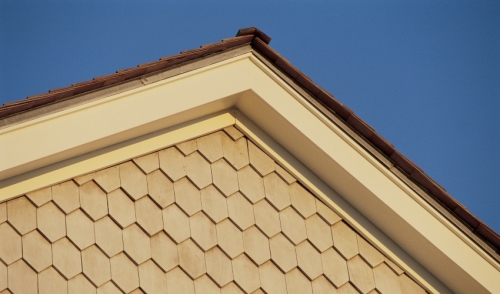{article.name}
9 Sagebrush Dr.
Victor, ID 83455
Phone: 208-787-9663
Fax: 208-787-9664
4 Tips for Complex Roofing Projects
No matter the size, every roofing project has its own unique intricacies. Here’s how to handle them with ease.

- Share this:
- Share on Facebook
- Pin on Pinterest
- Tweet on Twitter
The challenges that accompany every remodeling project are multiplied when it comes to homeowner association remodels. And when working on projects of immense size, the stakes are high for both contractors and residents.
La Rocque Better Roofs, a contractor serving southern California for nearly 40 years, draws 80% of its business from projects involving homeowner associations, which require all the moving parts of a single-family home renovation, but on a much more extensive scale. Last year, the company took on a re-roofing project that involved 185 units along with a clubhouse, standalone garage, and park restroom building—resulting in the need for 250,000 square feet of shingles across the property. The following are La Rocque’s top four tips for successfully completing such complex, expansive projects.
1] Begin with the End in Mind
It goes without saying that project management skills, installation expertise, and an adequate labor force are critical to every project, but the most important consideration is always finishing up with satisfied clients. On an HOA project, those clients are multiplied by tens, or even hundreds. This increases the stakes and difficulty of keeping everyone happy.
As soon as a contract is signed, sit down with your team’s key players to establish a management plan. Some questions to ask include: What is the ultimate end goal? What’s the best strategy for minimizing disruptions and keeping the jobsites clean throughout the project? Who handles communication between your team, the residents, and HOA officials, and how often? Answering these core questions before the project starts puts everyone in the right mindset for the long haul.
2] Ensure Adequate Labor
The size and scale of HOA projects makes it especially important to maintain a sizable, reliable labor pool for an extended period of time. “We maintain a core team of 75-110 people throughout the year to ensure projects stay on schedule,” says Rory Davis, La Rocque’s VP of HOA sales. The company’s recent re-roofing project required about nine months to complete, but Davis says it isn’t unheard of for HOA jobs to last for more than a year.
To make sure you always have the necessary labor force, keep lines of communication open and transparent even when you don’t have them on a job. Let them know when you expect to start and finish any new projects, and be upfront about any delays or issues that arise with the client.
3] Make Use of Materials Experts
Roofing materials manufacturers can be a helpful resource for home improvement pros, particularly on larger jobs. La Rocque, for example, has asked manufacturers to bring sample boards to jobsites and to contribute product knowledge as well support efficient installation.
“We [have a lot of expertise] in HOA work, from communication, cleanliness, workmanship, manpower, uniforms, and knowledge in working with multiple homeowners in a HOA setting,” says Davis. “It’s important to maintain all of these traits as these projects can go on for months to years.”
Even in jobs that may not take a large amount of time, establishing yourself as a professional who knows your industry intimately— but who also knows when it’s time to bring in reinforcements—will build your reputation without requiring you to lift a finger. And in an industry where clients rely on reviews and recommendations from personal contacts, this strategy pays dividends.
4] Address Unique Variables
This project presented a variety of challenges, including the detached garages next to each unit that blocked access for workers removing shingles. To navigate this particular variable, La Rocque invested in customized, extra-wide, sturdy walk boards. These allowed roofers to remove old materials and walk them directly into the truck, avoiding contact with landscaping.
“Residents didn’t have to worry about nails and debris dropping into their yards as shingles were removed from the roof,” says company president, Guy La Rocque. He estimates the walk boards reduced tear-off time by 4-5 hours per building.
Approach each project with fresh eyes, and ask yourself these questions: What on the jobsite could cause either the roofers or the clients a headache when the project is underway? Is there anything you can do to mitigate these challenges? Have you encountered a similar situation before, and could you apply the same solution here?
Sign up for our Email List
Stay updated with all our latest posts, products and offers! Just enter your information below.

Comments